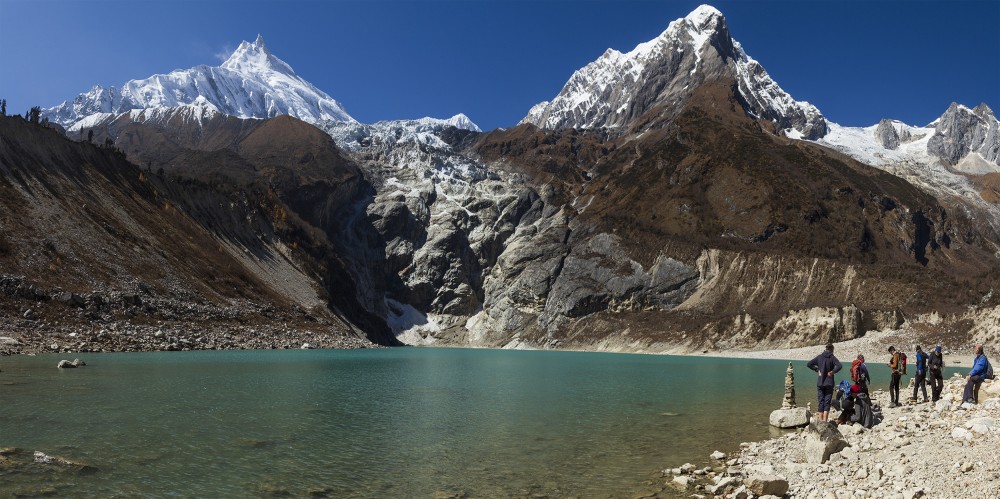 Overview of the Manaslu Trail
Overview of the Manaslu Trail
Manaslu Circuit Trek Nepal is not just a journey to the totally remote and rich natural heritage but also an opportunity to immerse yourself in the rich culture of the country. During the entire trek, you will walk through the Gurung and Tibetan settlements, interact, and learn about their former customs and way of life.
The 14-day Manaslu Circuit Trek in Nepal gives you the three major highlights of the trek (Birendra Lake & Pungyen Gompa, and Larke La Pass). It is an underrated and most captivating destination after Everest, Annapurna, and Langtang.
Check here about the Manaslu Circuit Trek 2024-2025
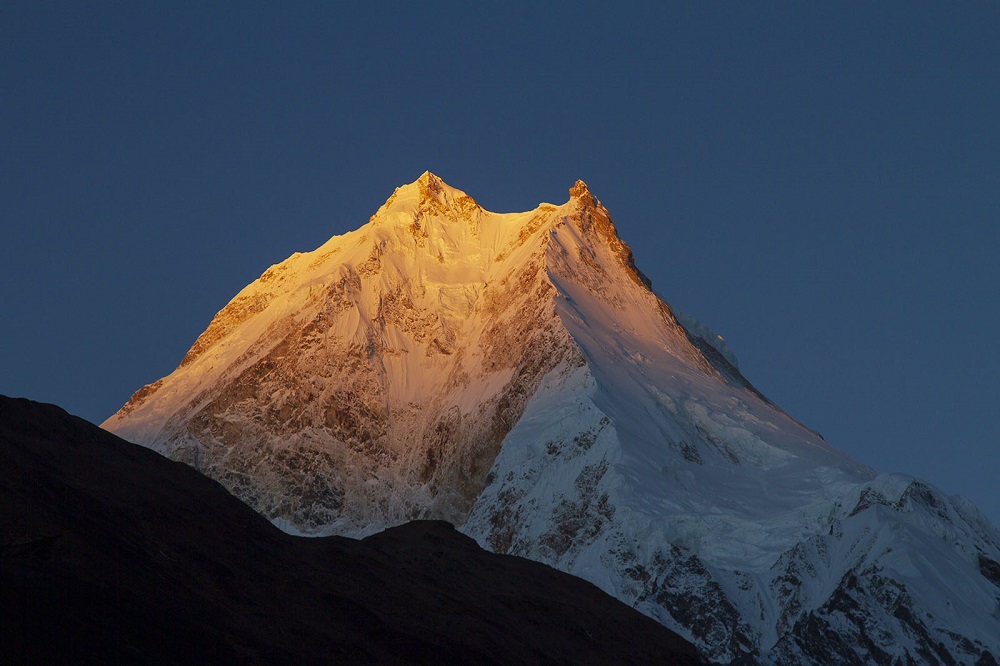
Why choose Manaslu Circuit Trail?
The Manaslu Circuit Trail is the best trail of the famous ones. It has remained a remote and off-beaten trail. Additionally, the circuit lies in the Manaslu Conservation Area (MCA) which is home to 9,000 inhabitants. There are over 2,000 species of plants, 39 mammals, 201 birds, 3 reptiles, and 11 butterflies in 11 types of forest reported from the area.
Some of the major highlights of the Manaslu Circuit Trek Nepal are:
There are some of the rewarding highlights of this 14-day Manaslu Trek, which you will stand utmost i.e.
- Mount Manaslu (the world’s eight-highest mountain 8,163m / 26,781ft)
- Birendra Lake
- Pungyen Gompa Monastery
- Manaslu Glacier
- Iced-capped Himalayas like Larkya, Samdo Himal, Panbari, Nirekha, Khayang, Saula, and others
- Larkya La Pass (5,213m / 17,103ft)
- Tatopani ‘Hot Spring’
- Culture and food of the Gurung community
Check here about the Short Manaslu Circuit Trek - 10 Days
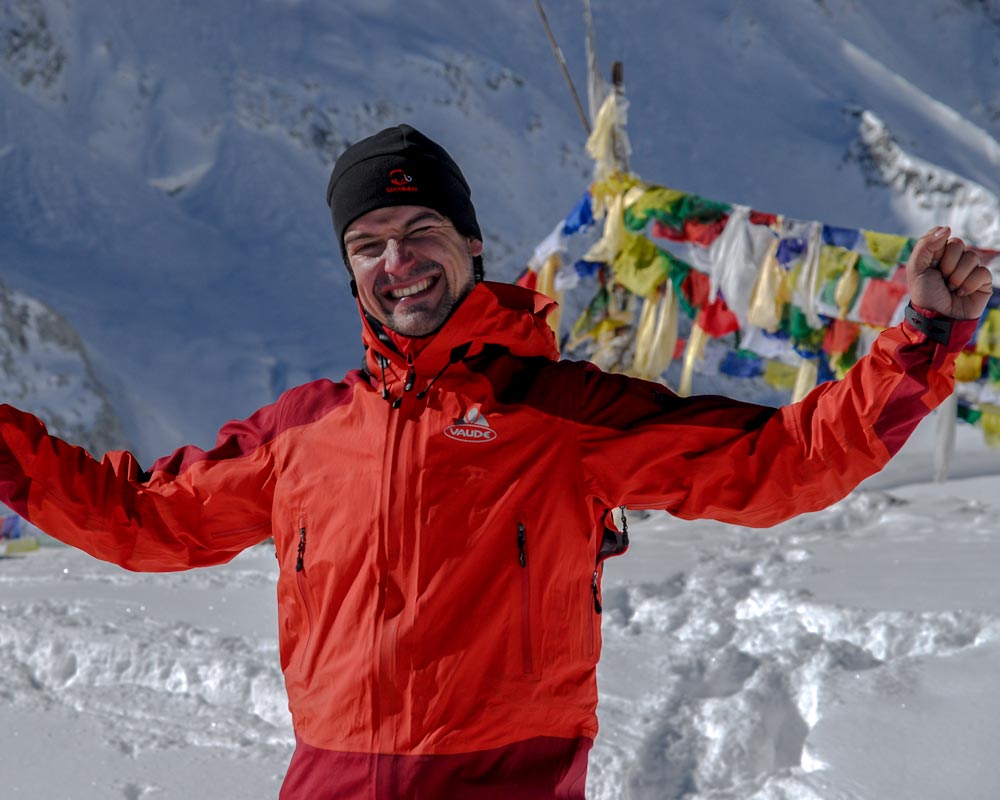
Ideal Time For the Trek to Manaslu Circuit
You can trek to this circuit in any season, depending on your personal preferences however, Spring and Autumn are the ideal season for the trek.
Spring: The greatest time to trek the Manaslu Circuit is between March and May when the landscape is in blossom and the skies are clear. Rhododendrons, Nepal's national flower, are in full bloom, and the temperature is pleasant. Furthermore, there are fewer people on the trails, resulting in a more relaxing hiking experience.
Autumn: For good reasons, autumn is the most popular trekking season between September and November for the Manaslu Circuit Trek in Nepal. Clear, dry weather makes for perfect trekking conditions. Clear skies allow for spectacular mountain views. The trail gets really busy during this time with the number of trekkers.
Winter: It is not recommended to hike the Manaslu Circuit Trek during the winter (December-February). Since the route gets slippery and snow-covered makes them dangerous. Furthermore, in winter the environment really gets cold, and there is a lot of snow up higher, making trekking more difficult. Additionally, the Larke La Pass gets closed during mid-winter and heavy snowfall.
Summer: The Manaslu Trek should not be walked during June and August when Nepal has its monsoon season. Because the trails are typically muddy and slippery, hiking during heavy rain becomes difficult and unpleasant. The trail also becomes blocked in some sections due to landslides and flooding caused by the heavy rain.
Learn more about the Best Season to Trek Manaslu Circuit
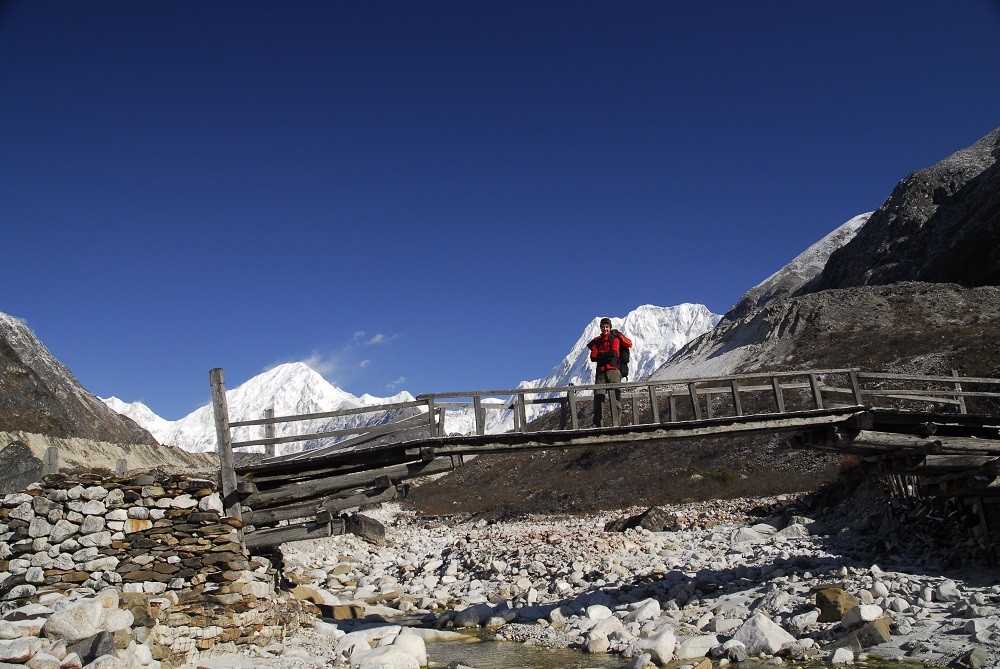
Detailed Itinerary of the Manaslu Circuit Trail
The trek typically takes 14 days to cover depending upon your pace. There should be an acclimatization point since you will hike at a higher elevation.
Furthermore, by adding extra days you can make your side trips to the underrated and restricted area ‘Tsum Valley’.
DAY 1: Arrive in Kathmandu, Nepal (1,400m / 4,600ft)
On the very first day, you arrive at Tribhuvan International Airport Kathmandu. The representative, the one company you booked for the trek will welcome and assist you to the hotel.
After the long flight, you can simply relax and explore your close area.
DAY 2: Kathmandu City Cultural and Heritage Tour
On your second you can simply explore the heritage of the bustling city. With the help of the guide explore the UNESCO World Heritage Site of Kathmandu.
- Kathmandu Durbar Square, Patan Durbar Square, or Bhaktapur Durbar Square
- Syambhunath (Monkey Temple)
- Bouddhanath
- Pashupatinath
After that, prepare for the adventure ahead.
DAY 3: Drive to Machha Khola (890m / 2920ft)
On your second morning, you will drive straight to Machha Khola via Arughat and Soti Khola after breakfast. Your drive for this day will cover 177 km and take almost 8 hours to reach your destination. Machha Khola lies in the Gorkha district of mid-west Nepal.
Enroute you will see the magnificent Himalayas Manaslu (8,163m / 26,781ft), Langtang Himal (7,234m / 23,734ft), and Ganesh Himal (7,422m / 24,350ft). Additionally, you have a clear view of the Ribbon Waterfalls, and a glimpse of some of the local wildlife, including monkeys and birds.
DAY 4: Trek from Machha Khola To Jagat (1,340m / 4,396ft)
The second day of the walk brings you to higher elevations with spectacular vistas of the mountain environment. Also, you will walk through the small Gurung farming villages like Khorla Beshi, and Yaruphant. Along, the route you can take a small break at Tatopani ‘Hot Spring’ for your next extreme adventure
Walking along the trail of Budhi Gandaki, crossing the suspension bridge you arrive at Jagat. Your total hike for this day will be for 7 hours and cover about 14 km.
The Village Jagat is the main entrance gate of the Manaslu Conservation Area (MCA).
DAY 5: Hike To Deng (1,865m / 6,119ft)
On the fifth day, you will set off for Deng. Deng is at 20 Km from Jagat and takes almost about 6 hours of hike.
The hike will begin with a ridge climb to Sirdibas. Then you will cross Ghatta Khola and a long suspension bridge to reach Phillim, which is the next Gurung village.
Walking straight to the north you reach the terrace field of the Ekle Bhatti. Here you will see a steep, deserted gorge. After that, descend to the grassy slopes of tall pine trees and cross the BudhiGandaki bridge.
Walking along the side of the Deng River takes you to the bamboo forests, and crossing the river you reach Deng village.
DAY 6: Hike from Deng to Namrung (2,630m / 8,629ft)
The next morning you walk from Deng to Namrung. The total distance between Deng and Namrung is about 19 KM and the walk will be for 6 hours.
Following the trail along the bank of the Deng River, and the steep climbs you will reach top winding forests. Walking through the trail, various Tibetan Mani walls (complex hand-carved stone walls with Buddhist scriptures), take you to the Ghap Village. Continue walking on the trail and you will reach Pork Village, which is the best viewpoint of Siring Himal (7,155m / 23,474ft).
After that follow the trail that takes you to a forest of firs, oaks, rhododendrons, and a deep bamboo area which will take you to Namrung Village.
DAY 7: Hike from Namrung to SamaGaun (3,525m / 11,565ft)
On your seventh day, you will have a tough hike to SamaGaun. The total walking distance is 17 KM and takes 6 hours to reach SamaGaun.
Hiking along the bank of Budhi Gandaki the trail leads you through the alpine forests. You will pass through various villages like Lhi, Simnag, Sho, Lho, and Shyala takes finally to SamaGaun.
The Village Lhi is famous for its chortens and barley terraces. Following the trail crossing Simnag and Sho village, you will reach Lho village which is known for ancient Tibetan culture. Walking up head you will cross Shyala village and finally reach to SamaGaun.
DAY 8: Acclimatization at SamaGaun
SamaGaun is a wonderful village where you can explore a lot of Nepal-Tibetan culture. Today on the acclimatization day you can make a side tour in the Manaslu region to the nearest destination.
- Manaslu Base Camp (4,800m / 15,748ft): Manaslu Base Camp provides spectacular views of Manaslu, Samagaon, and Birendra Lake.
- Birendra Lake (3,691m / 12,110ft): Birendra Lake is a freshwater lake located in Manaslu Glacier in Gorkha District in northern-central Nepal. The lake is named after the Late King Birendra Shah. It is near Punhyen Glacier and Gompa in Samagaun
- Pungyen Gompa: Pungyen Gompa, a monastery built just beneath the shoulder of Mount Manaslu, is locally known as Mt. Pungyen. Local Nubri people, a Tibetan nomadic tribe, are said to have settled here 400 years ago. They believe high on the icy peaks live the deity called lord Pungyen, protector of the region. They built the monastery to please the deity.
DAY 9: Hike To Samdo (3,875m/ 12,713ft)
Samdo is a small Tibetan refugee village near the Tibet border. The waking hour on this day will be for 4 hours and covers about 16 Km.
Start a walk from SamaGaun and continue the trail. You will cross a suspension bridge that leads you to the forest of juniper and birch. After that, the trail continues over the Budhi Gandkai River after you cross a suspension bridge.
From the Samdo village, you can see a clear view of the Sirmnag Himal, Ngadi Chuli, and Manaslu, along with icefalls and glaciers.
DAY 10: Hike to Dharmashala / Larkya Phedi (4,480m / 14,698ft)
On the 10th day, you will have a short hike to Dharmashala or Larkya Phedi. The walking distance is about 12km and takes almost 4 hours.
The trail includes the wooden bridge over the Budhi Gandkai River which will lead you towards Larkya Pass. The route to the day destination will cover a couple of streams, Larkya Glacier, and chortens and mani walls.
DAY 11: Cross Larkya La Pass (5,106m/ 16,929ft) and Descend to Bhimthang (3,590m / 11,778ft)
Today is the major day. The major part of the hike is crossing Larkya La Pass. The stage taking to and passing through the passes are pretty long and hard. However, you will have a long and simple descending walk to Bhimthang. The route covers about 24 KM and almost 8 hours of walking distance.
The Larke Pass will give the best views of the Himalayas like Humlung Himal, Cheo Himal Kang Guru, and the great Annapurna II.
DAY 12: Hike to Dharapani (1,910m / 6,266ft)
On this day you will have a last hike. The walking distance is about 22 KM and takes around 8 hours to descend.
The trail is very easy to Dharapani. The route to the day desalination is along the Budhi Gandkai River and covers several villages. It covers villages like Karche, Gho, Tilje, and Thonje.
En route, you can see the pine forests, rhododendrons, mani walls, and amazing views of the Marshyangadi Valley.
DAY 13: Drive to Kathmandu
On the final day of the journey, you will have a long drive to Kathmandu. It will take almost 8-9 hours to get back to Kathmandu.
Check out new blog about the Manaslu Circuit Trekking in 16 Amazing Photos! We bet you will be mesmerized.
Side trips during the Manaslu Circuit Trek Nepal
During your journey to the Manaslu Circuit Trek, there is another beautiful valley to explore ‘Tsum Valley’. This valley is also called ‘Beyul Kyimolung’, which means the valley of happiness so from locals.
The trail to this amazing and virgin and isolated land separates from the Jagat which is the entry gate of the Manaslu Conservation Area. The area is the home to the indigenous ‘Tsumba’ people. The Tsum valley is surrounded by Himalchuli in the west and Ganesh Himal in the south.
Additionally, Tsum Valley is considered as the spiritual serenity. Locals believe Buddhist Guru Rinpoche had once mediated here in the caves of the valley. Also, the presence of an ancient monastery ‘Sereng Gompa’ makes a bigger difference.
Check here about the Tsum Valley Manaslu Circuit Trek 2024-2025
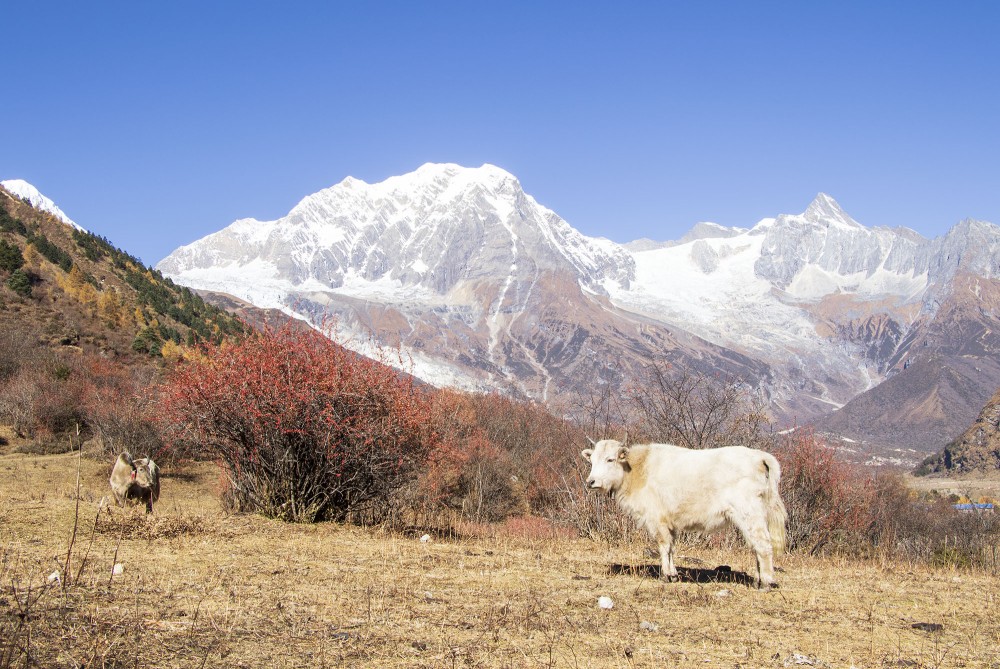
Basic Information
There are a few considerations that you need to know before you embark on the Manaslu Circuit Trek Nepal:
Permits: Before starting your journey you need to acquire a special Permit i.e
- Manaslu Restricted Area Permit:
- Manasalu Conservation Area Permit (MCAP)
Note: You will get these permits from your travel agency because you need to be accompanied by a registered company. You cannot trek to the restricted area on your own without a guide.
Learn more about Why Is Manaslu Circuit Restricted Area?
Guides and Porters: For your easy, informative, and best experience hiring a guide and porter (The one who carries your belongings) will be best.
Accommodation and Food: During the trek, you will be staying in a basic lodge and teahouses. Teahouses are simple lodges that provide basic accommodation and meals.
Altitude Sickness: As you hike in the higher elevation in the Manaslu Region, the risk of altitude sickness is mild. So before booking your trip choose the best and reputable trekking agency. They are the one who provides you with the best and most experienced guide who will help you in the entire trek.
Additionally, there are acclimatization days in the 14-day itinerary which will help your body to adapt to the environment and the altitude.
Equipment: A wonderful backpack, cozy hiking boots, warm clothes a nice sleeping bag, and your personal use things like (sunscreen, sunglasses, water bottles, camera, charging pots, trekking stick, and first aid kit). These will help you a lot in your trek.
Learn more about the Manaslu Region here
How difficult is the Manaslu Circuit Trek?
The Manaslu Circuit trip is a moderate high-pass trip in the Manaslu region. The walk is a wilderness hike in Nepal. If you choose the best time or seasons for Manaslu region treks, you may accomplish them simply and without difficulty.
Before hiking in the Manaslu region, you must be emotionally, psychologically, and physically prepared. You will need perfect physical health for this trek.
Conclusion
The Manaslu Circuit Trek Nepal offers an unforgettable journey through one of Nepal's most stunning and culturally rich regions.
It is the most famous and most renowned trekking route than Everest Base Camp Trek, Langtang Circuit Trek, Annapurna Base Camp Trek, and Dhaulagiri Trek.
The trek is an unexploited and less explored region delivers a perfect blend of all like natural beauty, cultural immersion, adventure, and anticipated rewards that leave you with lasting memories and a profound appreciation for this remote corner of the world.
.webp)
 Overview of the Manaslu Trail
Overview of the Manaslu Trail


